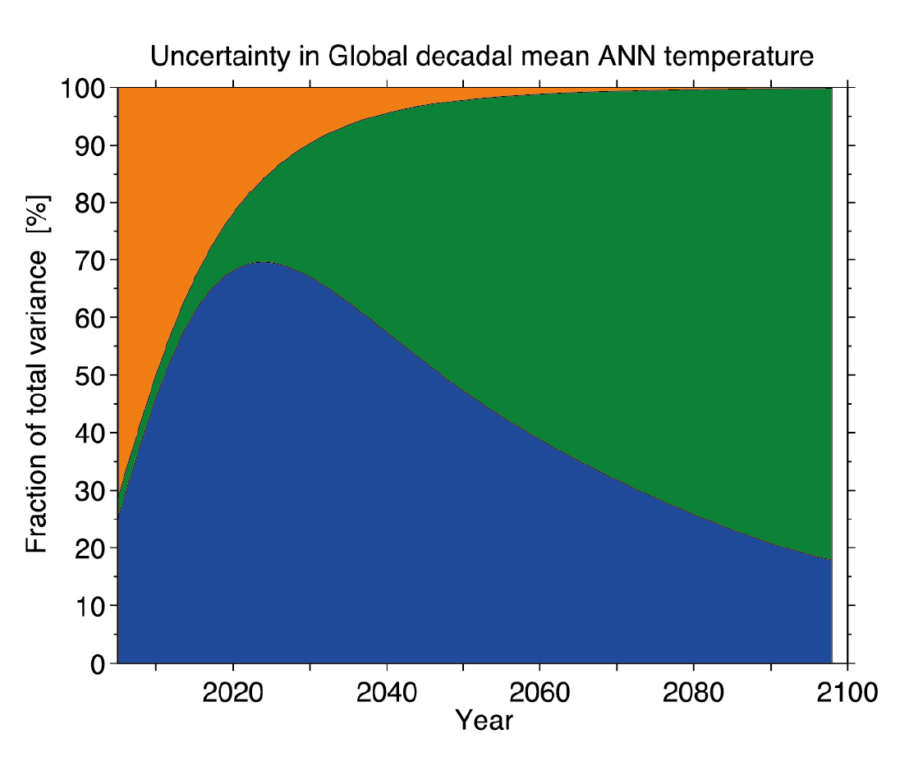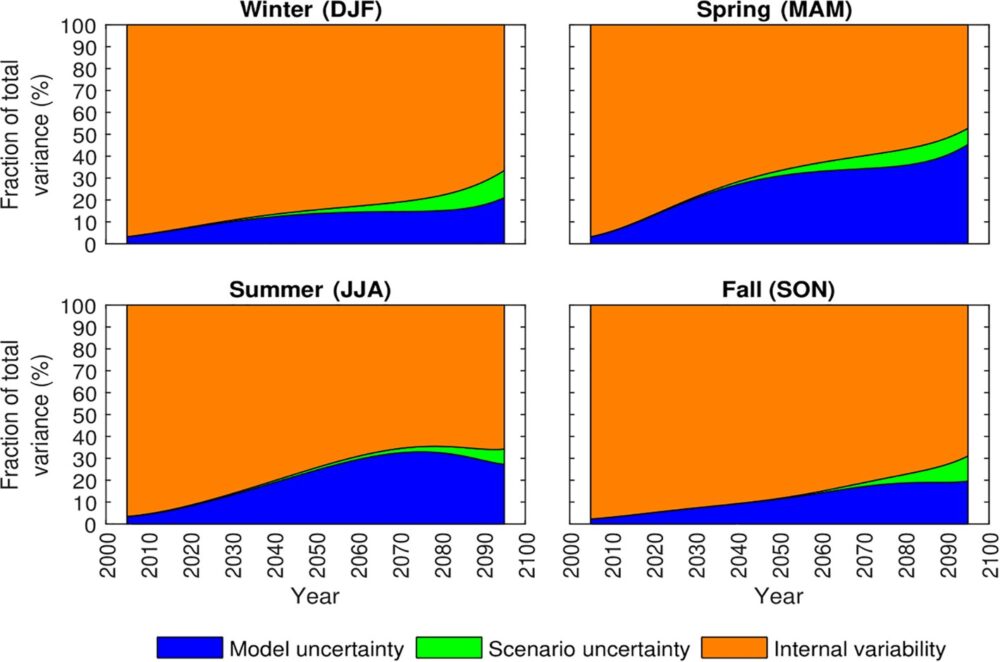What are the sources of uncertainty?
There are three main sources of uncertainty in climate projections:
Natural internal climate variability: Our climate is influenced by important unpredictable natural fluctuations that occur even without any change in greenhouse gas concentrations. Climate variability is due in part to semi-cyclical phenomena such as El Niño and North Atlantic Oscillation. This type of variability has and will always be part of Earth’s climate system and therefore scientists have represented this type of variability in climate models to the best of their ability. However, there are other determinants of climate variability that are external to the climate system, e.g., volcanic activity and changes to solar output. As these are largely unpredictable, they are not included in simulations of future climate but are present in simulations of historical climate since we have measurements of their occurrence and impact on the climate system during this period.
Model uncertainty: Numerous climate models exist and all have been developed following basic laws of physics. While they are sophisticated tools, these models continue to evolve as our understanding of the climate system improves and technology advances. As such, models remain imperfect tools, and model simulations of the climate can differ from reality and may react slightly differently to changes in forcings. Indeed, individual climate models differ in a number of aspects, such as the level of simplification, the grid size and the way in which they represent physical phenomena, particularly those that are too small to be explicitly simulated (e.g. clouds, surface atmosphere exchanges and the representation of soil and vegetation cover). Each model is unique and will generate slightly different projections, this is true even when they are run using identical greenhouse gas emissions scenarios. To help address this type of uncertainty, ensembles, or sets of climate models are often used to see where they agree and show the range of possible futures, to help with climate change preparedness.
Emissions scenario uncertainty: The evolution of greenhouse gas emissions is also uncertain and it is not possible at this time to determine exactly what future emissions will be. Consequently, models are run with different trajectories of emissions, known as Representative Concentration Pathways or RCPs, which are based on a set of assumptions about driving forces, such as technological change, demographic and socioeconomic development, land-use, and their key interactions. RCPs provide alternative visions of how the future may unfold and therefore influence the results of climate projections. Whether we move towards a cleaner, healthier environment and economy is in the hands of Canadians and other countries around the world.
The relative importance of the three sources of uncertainty changes depending on the geographic scale at which the model output is examined (over the whole globe or a continent for example), on the particular climate variable considered (e.g., temperature, precipitation, or other variables), and on the planning horizon and on the temporal scale of the variable of interest (yearly, seasonal or monthly for example). For instance, natural internal variability is particularly important over smaller regions and shorter time scales, and for projections of precipitation. Relative importance can also vary depending on the models and emissions scenarios used. The context in which these types of analyses are conducted must therefore be considered.










